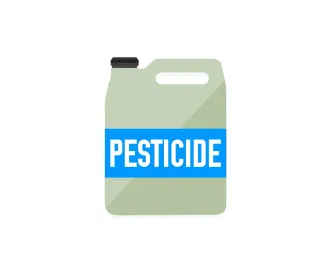On February 15, 2023, the U.S. Environmental Protection Agency’s (EPA) Office of Chemical Safety and Pollution Prevention (OCSPP) and the U.S. Food and Drug Administration’s (FDA) Center for Veterinary Medicine (CVM) announced plans to seek public input on the best approaches for updating their respective oversight responsibilities for specific products. EPA states the goal is to determine responsibilities in an efficient and transparent manner and in alignment with each agency’s expertise, thereby improving protection of human, animal, and environmental health.
EPA and FDA will hold a joint virtual public meeting on March 22, 2023, to provide information and receive public comment on the agencies’ current approaches for the oversight of various products regulated as either pesticides or new animal drugs. EPA and FDA state that members of the public will have the opportunity to comment during the meeting, and a docket will be available for the submission of written comments.
As background, EPA and FDA currently determine regulatory oversight of pesticides and new animal drugs based on the rationale described in a Memorandum of Understanding (MOU) between the agencies signed in 1971 and revised in 1973. Since that time, pesticide and animal drug technologies, and both agencies’ understanding of these technologies, have evolved. Examples provided include the following:
- Parasite treatment products applied topically to animals are regulated by EPA if they remain on the skin to control only external parasites (e.g., fleas, ticks) and by FDA if they are absorbed systemically into the bloodstream to control internal parasites (e.g., intestinal worms). The agencies state they now understand that many of the topically administered products currently regulated by EPA may not remain on the skin and are instead absorbed into the bloodstream. EPA and FDA are thus questioning the current approach and potentially different safety concerns.
- Genetically engineered (GE) pest animals, which are gaining interest as a pest control tool, were not envisioned 50 years ago when the original regulatory approach was developed. As agreed in the 2016 National Strategy for Modernizing the Regulatory System for Biotechnology Products, EPA and FDA have considered how to update their respective responsibilities with the goal of developing an efficient, transparent, and predictable approach for overseeing GE insects and other pest animals. Recently, Executive Order 14081, issued September 12, 2022, further directed the agencies to improve the clarity and efficiency of the regulatory process for biotechnology products, underscoring the need for continued coordination between the agencies on biotechnology.
In its notice, EPA acknowledges that the current approach to determining whether EPA or FDA is the appropriate regulator of certain products “does not effectively reflect or accommodate scientific advancement, and it has become clear in some cases that the current approach has resulted in misalignment between product characteristics and the agency better equipped to regulate the product.” EPA states further that “[a] modernized approach would ensure that the oversight of these products better aligns with each agency’s expertise, accounts for scientific advancement, avoids redundancy, better protects animal health and safety, and improves regulatory clarity for regulated entities, animal owners, veterinarians, and other stakeholders.”
Additional information about how to participate in the public meeting, including more detailed information describing challenges with the current approach, and how to submit public comments, will be posted on both FDA’s and EPA’s websites.
Commentary
The MOU at issue is outdated and presents considerable challenges for companies trying to determine the legal and regulatory construct for certain products. This notice thus is a significant development and potential opportunity to address numerous issues with the current jurisdictional divide between EPA and FDA. EPA has provided some clear examples where updated policies and approaches will be beneficial, but there are many more products to be considered. There also are other jurisdictional questions between EPA and FDA for other products that do not appear to be part of the current initiative, including antimicrobial products and medical/pesticide devices. The process being initiated now has the potential to provide much needed clarity for certain products and potentially pave the way for the agencies to consider further public input beyond the scope of the current notice.




 />i
/>i

